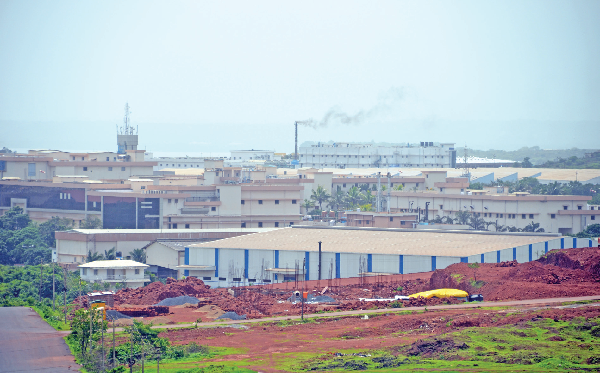Soon after announcing that it has released around 10 percent extra land in industrial estates, GIDC says that its field officers are out there to analyse how much extra land can actually be allotted to the industries in each industrial estate

It’s a known fact that Goa is facing a huge shortage of industrial land. What makes this shortage even worse is another fact that more than 30 lakh square meters of land is stuck in special-economic-zone (SEZ) related litigation in the Supreme Court.
As a result, industries find it very difficult to get land allotted to them, which badly affects Goa’s performance on ‘ease of doing business’ parameter as well. It is in this context that Goa Industrial Development Corporation (GIDC)’s announcement that extra 10% land will be released in the industrial estates by reducing open space by 7.5% and reducing space reserved for amenities by 2.5% should be seen.
To ensure that this plan doesn’t merely remain on the paper and is executed, GIDC has already started taking concrete steps in this direction.
Narayan M. Gad, managing director, GIDC, said, “We have told our field officers to survey the open space in industrial estates. Once that is done, we will know in another 15-20 days the complete picture as to how much extra land from open space we can allot to the industries in the industrial estates. It may be difficult to allot the entire extra 10% land to the industries because some of the open space is in hilly areas with slopes.”
When asked which industrial estates have open space on slopes, Gad replied, “The industrial estates in Verna, Kundaim and Pilerne have hilly land with slopes. Therefore, it will be difficult to give all the extra 10% here to the industries.”
But, the state government could consider the idea of flattening the hilly areas to create more space for the industries in the industrial estates. To this, Gad replied, “Suppose cost of flattening is more than what the state government will earn, why would we flatten it?”
It’s true that the cost has to be taken into consideration because industrial plots are given on subsidised rates to encourage the industries. Unless and until the government is sure that it will recover the cost involved in flattening the hilly areas in industrial estates, it is not advisable to start the process of flattening.
The process to allot plots to the industries from the extra 10% in the industrial estates will involve a number of steps. First, the actual extra space has to be identified in every industrial estate. Second, the space thus identified has to be sub-divided into plots, which will require the permission of the Town and Country Planning Department (TCP). Third, it has to be ensured that the plots thus created have all kinds of infrastructure like power connection, water connection and road access.
Gad said, “I have even told the field officers to do survey on how much infrastructure will be required for those industries, which will come up in the open space. Only after the infrastructure is built that we will start allotting plots to the industries.”
The local industry is closely following GIDC’s plans to create additional land for the industries. Sandip Bhandare, president, Goa Chamber of Commerce and Industry (GCCI), said, “In normal circumstances, more
land for industries is created by acquiring new areas. However, land
acquisition has become a difficult process now. Even if the government acquires land for industries, it will have to do so at a very high price. By releasing extra 10% in industrial estates, additional industrial land is being generated in the state without significant additional cost.”
Bhandare continued, “There is another aspect here. The demand for land is more in certain industrial estates because these parts are better connected. Due to the latest GIDC’s announcement, more areas will be created in such industrial estates.”
Verna Industrial Estate is the most preferred by the industries. For one, it is right on the highway. Second, it is well connected to the port, airport and the railway station in Margao. However, unlike Verna Industrial Estate, in most other industrial estates due to flat surface, it wouldn’t be difficult to identify the open space, which can be allotted to the industries.
Sohan Kelekar, president, Madkaim Industrial Estate Association, said, “The land is flat in our industrial estate. Therefore, it shouldn’t be a problem for GIDC to identify the open space for industries here and sub-divide it into plots. Having said that, GIDC will have to ensure that it creates adequate infrastructure for the industries, which will come up in new plots. Right now, the existing industries in Madkaim Industrial Estate have to get water from tankers sometimes because water supply is insufficient.”
In the meanwhile, the local industry is keenly anticipating creation of the additional land. Some of the projects cleared by the investment promotion board (IPB) have not been allotted plot yet. A source said, “If the size of plot being created in the open space is more than 3,000 square meters, then, it will have to be allotted to projects approved by the IPB.”
This is because bigger projects seek IPB’s nod. For plots less than 3,000 square meters in size, GIDC will follow its allotment rules to allot them to the industries.
The fact that GIDC has begun identifying extra land comes as music to the ears of industrialists. However, as explained, it will involve a number of steps to finally allot plots to the industries, which will require a professional approach on GIDC’s part.